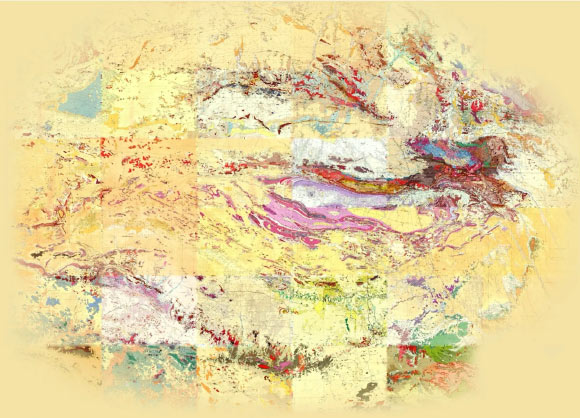
Geologists from Virginia Commonwealth University and elsewhere have found new evidence of bolide impact signatures within specimens from the Massive Australian Precambrian-Cambrian Impact Structure in the Northern Territory, Australia.
The Massive Australian Precambrian-Cambrian Impact Structure (MAPCIS) is a non-concentric complex crater about 600 km (370 miles) in diameter.
The impact occurred at the end of the Ediacaran period, approximately 545 million years ago.
“The discovery of MAPCIS is a testament to the power of collaborative research,” said team member Dr. Daniel Connelly.
“Our findings not only highlight the significance of this impact structure but also open new avenues for understanding Earth’s geological past.”
Among the geological evidence Dr. Connelly and colleagues uncovered to support the age, size and location of the impact are massive deposits of pseudotachylite breccia, or melt rock, near the crater center.
The researchers found shocked minerals, including lonsdaleite, or shocked diamond, in the deposits, along with impact level amounts of iridium.
“These pseudotachylite breccia specimens garnered significant attention due to their distinctive characteristics,” they said.
“These breccias, which are found within granulite facies rocks, were originally interpreted as products of seismic activity.”
“However, recent investigations provided compelling evidence suggesting an impact-related origin.”
“Working on the MAPCIS project has been an incredible journey,” said team member Dr. Arif Sikder, a researcher at Virginia Commonwealth University.
“The data we’ve gathered offer a unique glimpse into the forces that have shaped our planet, and I’m excited about the future research this discovery will inspire.”
The authors will present their results tomorrow at Connects 2024, the Geological Society of America’s annual meeting, in Anaheim, California.
_____
Daniel Connelly et al. Petrographic Evidences of the MAPCIS Bolide in Musgrave Pseudotachylite Specimens. Connects 2024, poster ID 247-10
 Print
Print





